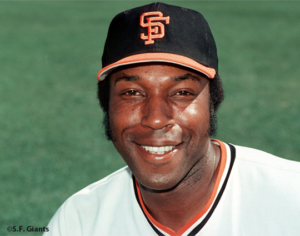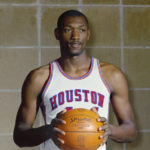The plan to sell Texas to Great Britain
Stephen Pearl Andrews, a lawyer, Houston socialite, and abolitionist, concocted a plan to free Texas’ slaves—with a hint of treason.
(JSTOR Daily) In 1843, a New England lawyer almost managed to sell Texas to Great Britain. A convinced abolitionist practicing law in what was then the independent Republic of Texas, Stephen Pearl Andrews got it into his head that, in an attempt to free Texas’s slaves, he would invite a foreign power into North America and hand over a massive chunk of it. Andrews’s attempt to free Texas’s slaves by way of an invitation to foreign interference illustrates the strange bedfellows created by “the slavery question” in the nineteenth century. Andrews, in his quixotic vision, in his idealism, ambition, and occasional crankery, was an exemplary nineteenth-century American figure.
Andrews spent his late teens and early twenties teaching at a girls’ school in New Orleans opened by his brother and sister-in-law, where he was exposed to the reality of slavery. He grew close to a man named George, a slave at the Andrews’s school, who went about his work with a cheerful attitude until, one night, confiding as to the true nature of his condition. George’s reports of his own sorry treatment at the hands of his owners, from the everyday indignities to whippings, left Andrews with “a profound impression… of the tremendous power of that great national machinery of oppression, American Slavery.” That impression never left him. (more)
Emmett Till’s death could easily have been forgotten. Here’s how it became a Civil Rights turning point instead.
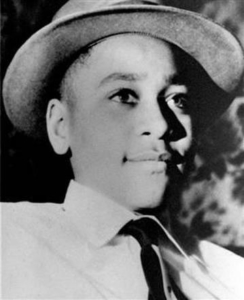 (Time) There are many startling things about the Emmett Till case. But, 63 years after his death, perhaps the most startling of all is the fact that Americans know his name, even recognize his face.
(Time) There are many startling things about the Emmett Till case. But, 63 years after his death, perhaps the most startling of all is the fact that Americans know his name, even recognize his face.
Back in the summer of 1955, when J.W. Milam and Roy Bryant savagely beat the 14-year-old Chicago kid, shot him in the head, weighted his body down and dumped it in the Tallahatchie River, they thought that was the end of it.
Till had whistled at Bryant’s wife Carolyn, or spoken suggestively to her, or laid hands on her — the story kept changing. It was the classic Southern tale of a black male accused of violating the region’s taboo against interracial intimacy. Literally thousands of African American men were lynched under such accusations.The civil rights leader Aaron Henry once remarked that the most surprising thing about the Till story was not its horror but the fact that white people even noticed. After all, black boys had been lynched for decades with impunity. African American bodies were not supposed to reemerge, and they certainly were not supposed to stir national and even international outrage.
But this one did. Killing Till and dumping his body did not end the story, quite the contrary. (more)
Baseball legend Willie McCovey has died; here’s a look back at his one season in Dallas
(Dallas Morning News) The future Baseball Hall of Famer’s name was misspelled the first time it appeared in The Dallas Morning News, on Sept. 30, 1956. “Willie Lee Covey,” this newspaper called the kid who that season hit .310 for the New York Giants’ Class-B affiliate in Danville, Va.
Willie McCovey, the teen first baseman from Mobile, Ala., was coming off a year during which he hit 29 homers and 38 doubles, leading the Carolina League. The big club was promoting him up to Dallas, to the mighty Eagles of the Texas League.
McCovey’s time in Dallas would not last long — a single championship season spent on the banks of the Trinity River, at Burnett Field on Jefferson Boulevard. His days wearing an Eagle uniform are, at most, an aside in an illustrious career. I’ve yet to see that 1957 season mentioned in the obituaries and tributes penned since McCovey’s death at the age of 80 on (Oct. 31). (more)
PVAMU 2018 Sports Hall of Fame Banquet
 A pair of legendary teams and several individuals are among the 2018 Class of the Prairie View A&M Sports Hall Of Fame which will hold induction ceremonies Friday, Nov. 16, 7:00 pm at the Willie A. Tempton, Sr. Memorial Student Center Ballroom on the PVAMU campus.
A pair of legendary teams and several individuals are among the 2018 Class of the Prairie View A&M Sports Hall Of Fame which will hold induction ceremonies Friday, Nov. 16, 7:00 pm at the Willie A. Tempton, Sr. Memorial Student Center Ballroom on the PVAMU campus.
The Class of 2018 includes: the 1974 Women’s Track Team, the 2006 Baseball Team, Jocelyn Adams (track), Dakari Lenear (track), John Mayes (athletic supporter), Debra Melrose-Spivey (track), Shelia Pettit-Austin (track), Charles Porter III (athletic supporter), Michael Richard (baseball), and Mary Miller-Young (track).
To purchase tickets to the event, visit pvpanthers.com/hof2018. Click here for more information.
TIPHC Bookshelf
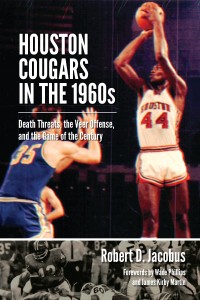 Published scholarship on black history in Texas is growing and we’d like to share with you some suggested readings, both current and past, from some of the preeminent history scholars in Texas and beyond. We invite you to take a look at our bookshelf page – including a featured selection – and check back as the list grows. A different selection will be featured each week. We welcome suggestions and reviews. This week, we offer, “Houston Cougars In the 1960s,” by Robert D. Jacobus.
Published scholarship on black history in Texas is growing and we’d like to share with you some suggested readings, both current and past, from some of the preeminent history scholars in Texas and beyond. We invite you to take a look at our bookshelf page – including a featured selection – and check back as the list grows. A different selection will be featured each week. We welcome suggestions and reviews. This week, we offer, “Houston Cougars In the 1960s,” by Robert D. Jacobus.
On January 20, 1968, the University of Houston Cougars upset the UCLA Bruins, ending a 47-game winning streak. Billed as the “Game of the Century,” the defeat of the UCLA hoopsters was witnessed by 52,693 fans and a national television audience—the first-ever regular-season game broadcast nationally.
But the game would never have happened if Houston coach Guy Lewis had not recruited two young black men from Louisiana in 1964: Don Chaney and Elvin Hayes. Despite facing hostility both at home and on the road, Chaney and Hayes led the Cougars basketball team to 32 straight victories.
Similarly, in Cougar football, coach Bill Yeoman recruited Warren McVea in 1964, and by 1967 McVea had helped the Houston gridiron program lead the nation in total offense.
Houston Cougars in the 1960s features the first-person accounts of the players, the coaches, and others involved in the integration of collegiate athletics in Houston, telling the gripping story of the visionary coaches, the courageous athletes, and the committed supporters who blazed a trail not only for athletic success but also for racial equality in 1960s Houston.
This Week in Texas Black History
Nov 11
Captain Norman W. Scales, a Tuskegee Airman and the first licensed black pilot in Austin, was born on this day in 1918. Scales flew 70 missions over enemy territories and earned the Distinguished Flying Cross and certificate of valor.
Nov 12
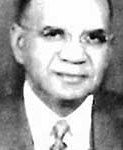 On this date in 1893, physician James Lee Dickey was born near Waco. A graduate of Tillotson College (now Huston-Tillotson University) in 1916, he entered Meharry Medical College in Nashville and graduated in 1921. Dickey returned to Texas to help is widowed mother raise his eight siblings and settled in Taylor, northeast of Austin. Dickey was the only black doctor in Williamson County and one of only 130 black doctors in Texas. He established a medical facility that began with a three-bedroom clinic and expanded to a fifteen-bed hospital with modern surgical and obstetrical facilities. The clinic was open to all needy patients — regardless of race — from Williamson, Lee, Travis, Milam, Bell and Bastrop counties. Early in his career he also curbed a typhoid fever epidemic in 1932 through a vigorous vaccination program. He became a trustee of Tillotson college and in 1953 was named Taylor’s most outstanding citizen by the chamber of commerce, the first time a black man had been so honored in the community.
On this date in 1893, physician James Lee Dickey was born near Waco. A graduate of Tillotson College (now Huston-Tillotson University) in 1916, he entered Meharry Medical College in Nashville and graduated in 1921. Dickey returned to Texas to help is widowed mother raise his eight siblings and settled in Taylor, northeast of Austin. Dickey was the only black doctor in Williamson County and one of only 130 black doctors in Texas. He established a medical facility that began with a three-bedroom clinic and expanded to a fifteen-bed hospital with modern surgical and obstetrical facilities. The clinic was open to all needy patients — regardless of race — from Williamson, Lee, Travis, Milam, Bell and Bastrop counties. Early in his career he also curbed a typhoid fever epidemic in 1932 through a vigorous vaccination program. He became a trustee of Tillotson college and in 1953 was named Taylor’s most outstanding citizen by the chamber of commerce, the first time a black man had been so honored in the community.
Nov 12
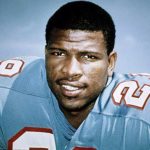 Ken Houston, Pro Football Hall of Fame safety, was born on this day in 1944 in Lufkin, Texas. Houston played collegiately at Prairie View A&M, then starred with the Houston Oilers and Washington Redskins. Houston became the National Football League’s premier strong safety of 1970s and was All-Pro or All-AFC/NFC eight of nine years, 1971-1979.
Ken Houston, Pro Football Hall of Fame safety, was born on this day in 1944 in Lufkin, Texas. Houston played collegiately at Prairie View A&M, then starred with the Houston Oilers and Washington Redskins. Houston became the National Football League’s premier strong safety of 1970s and was All-Pro or All-AFC/NFC eight of nine years, 1971-1979.
Nov 13
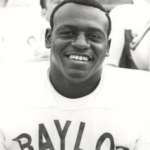 On this day in 1947, John Hill Westbrook was born in Groesbeck, Texas. On September 10, 1966, Westbrook, as a running back for Baylor University, became the first black football player to compete in the Southwest Conference when he entered a game in the fourth quarter. His debut came one week before the more celebrated start for Southern Methodist University’s Jerry LeVias.
On this day in 1947, John Hill Westbrook was born in Groesbeck, Texas. On September 10, 1966, Westbrook, as a running back for Baylor University, became the first black football player to compete in the Southwest Conference when he entered a game in the fourth quarter. His debut came one week before the more celebrated start for Southern Methodist University’s Jerry LeVias.
Nov 14
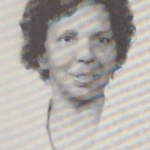 Doris Hollis Pemberton, reporter, civic leader, and author, was born on this day in Nacogdoches, Texas in 1917. Pemberton studied at Texas College and graduated from Texas Southern University. In 1944, as a writer for the Dallas Express, she became the first black reporter to cover a state Democratic convention in Texas. In Houston, during the 1950s, Pemberton helped develop classes for black students in arts, crafts, and science at local museums. She was the author of “Juneteenth at Comanche Crossing.”
Doris Hollis Pemberton, reporter, civic leader, and author, was born on this day in Nacogdoches, Texas in 1917. Pemberton studied at Texas College and graduated from Texas Southern University. In 1944, as a writer for the Dallas Express, she became the first black reporter to cover a state Democratic convention in Texas. In Houston, during the 1950s, Pemberton helped develop classes for black students in arts, crafts, and science at local museums. She was the author of “Juneteenth at Comanche Crossing.”
Nov 15
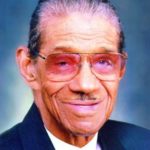 Conrad “Prof” Johnson, director of the legendary Kashmere High School Stage Band and one of Houston’s greatest jazz educators, was born on this day in 1915 in Victoria, Texas. Johnson taught in Houston schools for more than 30 years. He created and led the Kashmere band during its heyday in the 1960s and ’70s when it was among the nation’s best, and traveled across the United States and to Europe and Japan. The band won 42 out of 46 contests it entered between 1969 and 1977, and recorded eight albums featuring more than 20 original compositions by Johnson. The band is featured in the documentary, “Thunder Soul.”
Conrad “Prof” Johnson, director of the legendary Kashmere High School Stage Band and one of Houston’s greatest jazz educators, was born on this day in 1915 in Victoria, Texas. Johnson taught in Houston schools for more than 30 years. He created and led the Kashmere band during its heyday in the 1960s and ’70s when it was among the nation’s best, and traveled across the United States and to Europe and Japan. The band won 42 out of 46 contests it entered between 1969 and 1977, and recorded eight albums featuring more than 20 original compositions by Johnson. The band is featured in the documentary, “Thunder Soul.”
Nov 16
On this date in 1963, tennis professional Zina Garrison was born in Houston. In 1990 at Wimbledon, Garrison became the first Black woman since Althea Gibson to reach a Grand Slam final. In 1989, she reached a career high ranking of No. 4 in the world and teamed with Pam Shriver to win an Olympic gold medal in 1988 in doubles competition in Seoul, Korea.
Nov 17
Basketball player Elvin Hayes, one of the first black athletes at the University of Houston, was born on this day in 1945 in Rayville, La. Hayes was a three-time All-America and was selected as the College Player of the Year in 1968. As a pro, he was the first pick in the 1968 NBA draft by the San Diego (later Houston) Rockets, and would also star for the Baltimore/Washington Bullets. Hayes retired in 1984 as the second-leading scorer in league history with 27,313 points, was inducted into the Naismith Memorial Basketball Hall of Fame in 1990, and was named one of the NBA’s 50 greatest players in 1996.
Blog: Ron Goodwin, Ph.D., author, PVAMU history professor
Ron Goodwin is an assistant professor of history at Prairie View A&M University. Even though he was a military “brat,” he still considers San Antonio home. Like his father and brother, Ron joined the U.S. Air Force and while enlisted received his undergraduate degree from Texas Lutheran University in Seguin, Texas. After his honorable discharge, he completed graduate degrees from Texas Southern University. Goodwin’s book, Blacks in Houston, is a pictorial history of Houston’s black community. His most recent book, Remembering the Days of Sorrow, examines the institution of slavery in Texas from the perspective of the New Deal’s Slave Narratives.
Recent Posts
Time warp
I’m a big fan of science fiction. I grew up on a daily diet of the original Star Trek series. I watched mesmerized, with my Major Matt Mason action figure in my hand as I watched the moon landing in 1969. One of my favorite science fiction storylines involve time travel. I found just the…(more)
The team
We live in an amazing world. There’s little chance my great grandfather, Big Pappa, could have ever envisioned world-wide communications at the click of a mouse. I’d like to say Big Pappa was a simple man. A country preacher from Gonzales, Texas. But he was so much more. He always told me that my brains…(more)
Submissions wanted
Historians, scholars, students, lend us your…writings. Help us produce the most comprehensive documentation ever undertaken for the African American experience in Texas. We encourage you to contribute items about people, places, events, issues, politics/legislation, sports, entertainment, religion, etc., as general entries or essays. Our documentation is wide-ranging and diverse, and you may research and write about the subject of your interest or, to start, please consult our list of suggested biographical entries and see submission guidelines. However, all topics must be approved by TIPHC editors before beginning your research/writing.
We welcome your questions or comments. Please contact Michael Hurd, Director of TIPHC, at mdhurd@pvamu.edu.

